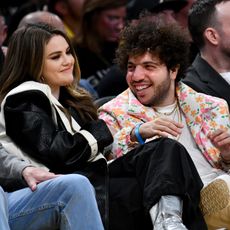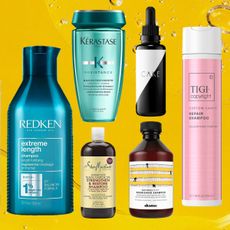

There is no doubt that the introduction of Botox back in 2002 was a game changer for the beauty and cosmetic-surgery industries. Fifteen years in, its popularity shows no signs of slowing down. In fact, the number of younger women (aged 19-34) receiving injections has actually soared 41% since 2011, according the American Society for Aesthetic Plastic Surgery.
It's those young women who might be feeling a "crack-like addiction" to injectables, one researcher says. In her new book Botox Nation: Changing the Face of America, Dana Berkowitz, PhD, wonders if doctors are creating (and enabling) lifelong customers by suggesting they start younger and younger.
"The problem is that Botox only lasts for between four and six months, so once you start seeing those lines form again you go back," explains Berkowitz. "Women I interviewed talked about it in terms of it being addictive. One said she was 'crack-like' about it."
A post shared by Kelly Choi, NP-C (@theinjectionista)
A photo posted by on
It's not just the temporary nature of Botox that keeps women coming back; it's also the Sisyphean task of trying to stop or erase every sign of aging, including those that haven't even appeared yet.
One 30-year-old told Berkowitz, "I love Botox, but the only problem is that now the attention is taken away from my forehead and I'm starting to notice my parentheses around my mouth. I feel like I want fillers there."
While Botox has a myriad of uses—like obstructing over-active sweat glands and maybe even easing depression—Berkowitz's book attacks the whole "preventative" concept as an insidious tool of the beauty biz, another way to make women feel inadequate.
Hmm, major food for thought. Just don't think too hard...it might cause a forehead wrinkle.
Stay In The Know
Marie Claire email subscribers get intel on fashion and beauty trends, hot-off-the-press celebrity news, and more. Sign up here.
Follow Marie Claire on Facebook for the latest celeb news, beauty tips, fascinating reads, livestream video, and more.
-
 Zendaya and Tom Holland Have Discussed Marriage, Source Claims
Zendaya and Tom Holland Have Discussed Marriage, Source ClaimsBut right now they're busy with work.
By Iris Goldsztajn Published
-
 Prince William Told Princess Charlotte's Favorite Joke, And I'm Cackling
Prince William Told Princess Charlotte's Favorite Joke, And I'm CacklingHelp, I have the sense of humor of an 8-year-old.
By Iris Goldsztajn Published
-
 Benny Blanco Says He Had a 'Clueless' Moment Realizing He Was in Love With Selena Gomez
Benny Blanco Says He Had a 'Clueless' Moment Realizing He Was in Love With Selena GomezThe reference! The sweetness!
By Iris Goldsztajn Published
-
 The 32 Best Hair Growth Shampoos of 2024, According to Experts
The 32 Best Hair Growth Shampoos of 2024, According to ExpertsRapunzel hair, coming right up.
By Gabrielle Ulubay Published
-
 The 20 Best Hair Masks for Damaged Hair, According to Experts and Editors
The 20 Best Hair Masks for Damaged Hair, According to Experts and EditorsHealthy strands, here we come!
By Gabrielle Ulubay Last updated
-
 How Often You Should Wash Your Hair, According To Experts
How Often You Should Wash Your Hair, According To ExpertsKeep it fresh, my friends.
By Gabrielle Ulubay Published
-
 The 11 Best Magnetic Lashes of 2023
The 11 Best Magnetic Lashes of 2023Go ahead and kiss your messy lash glue goodbye.
By Hana Hong Published
-
 Beauty Advent Calendars Make the Perfect Holiday Gift
Beauty Advent Calendars Make the Perfect Holiday GiftThe gift that keeps on giving.
By Julia Marzovilla Last updated
-
 The 18 Best Natural Hair Products in 2023
The 18 Best Natural Hair Products in 2023Remember: Your curls are your crown.
By Gabrielle Ulubay Published
-
 The 9 Best Hot Rollers for the Curls of Your Dreams
The 9 Best Hot Rollers for the Curls of Your DreamsThis is how we roll.
By Samantha Holender Published
-
 The 12 Best Cream Eyeshadows, According to Makeup Artists
The 12 Best Cream Eyeshadows, According to Makeup ArtistsThe best part? They’re so easy to apply.
By Samantha Holender Published